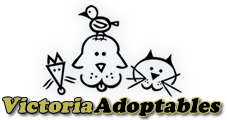
What We Need To Know About Feeding Our Dogs Table Scraps
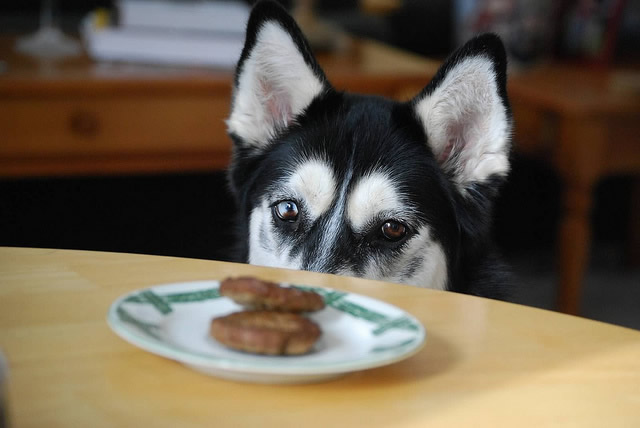
Many dog owners have gotten to grips with what makes for cozy and safe dog housing for their pets, but not feeding table scraps. People in the pet community have mixed feelings about feeding table scraps to dogs. To feed or not to feed off the table has been a hot topic of debate. Some veterinarians and experts advise against it, citing health and behavioral effects. However, others also acknowledge that certain human-grade foods are in fact healthy for dogs. Will it really hurt to toss a dog a treat off the table?
All "human foods" are not made equal
Some important facts validate the objections to feeding dogs table scraps. One is that not all “human foods” are dog-safe. The wide selection of human-grade foods that a dog could possibly get access to is a tricky smorgasbord. Some foods that humans routinely store in their pantries are fine for dogs.
However, there is a certain list of “human foods” that a dog cannot properly process or are downright toxic to them and thus should not eat. Many of these forbidden foods actually promote human health. Such no-no foods include chocolate, caffeine, onions, garlic, avocado, grapes and raisins, milk, salty foods, sweets, and macadamia nuts, to name some. Definitely, a dog owner cannot apply the concept of what’s good for humans is good for dogs.
Obviously, a dog owner must know the food items on this important list of food no-no’s and be vigilant about keeping them out of dogs’ reach. One way of keeping a dog from ingesting harmful human foods is by not emptying their plates into the dog’s feeding bowl.
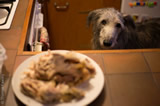


Leftovers can make dogs fat
People often give leftovers from the table to their dogs to avoid creating waste. But if scraps are all a dog ever feeds on, then it will not be getting a balanced diet and the nutrients it needs for good health. For one, what are often left on the plate are not the good parts of the food, such as fat trimmings and turkey skin.
For another, many households do not eat the healthiest of dinners, often ordering take-out like fried chicken and pizza. While a dog will gobble these foods down without protest, rich and greasy foods do to it exactly what these kinds of foods do to humans – make them fat. Obesity is one of the leading health problems in humans and, increasingly, in dogs as well.
On top of that, dogs much more easily develop pancreatitis from eating rich, fatty foods, even if they are not used to eating such kinds of foods. Pancreatitis cases in dogs notably increases around Thanksgiving and holidays, when the dinner table often brims over with all sorts of rich foods.
Feeding off the table teaches bad behaviors
Another issue to worry about feeding off the table is that, over time, dogs develop undesirable behaviors. When they learn that getting food from the table is okay for them, they learn to beg. Tolerable if they just wait at their human’s side with imploring eyes – which could be difficult to resist, admittedly – but they could also become a nuisance by whimpering and prodding incessantly until their humans are forced to give in. The behaviors could get worse still. Dogs allowed to receive morsels at the table could learn to jump up at the table while the family is eating or even counter-surf, which is to steal whatever delectable morsels are being placed out of its reach by jumping up on a counter or table, whether a human is around or not.
Table scraps can be given as treats
That said, leftover morsels, if selected with care, are not all bad. In fact, since leftovers can be savory, they actually make good doggie treats. Dogs love nothing more than a succulent and tender treat from the dinner table to motivate them to perform tricks or undergo obedience training. When given, table scraps should be employed like ordinary treats in that these should be counted as part of a dog’s food consumption for the day. As a rule to go by, treats should not make up more than 10% of a dog’s daily food intake and should not substitute for a full meal. Besides, treats were not designed to replace a full meal, and in the same way, table scraps should not, too.
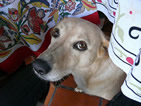

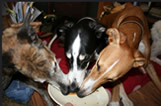
Toss your dog table scraps moderately
Since dogs process foods differently from humans, dog owners who decide to give dog-safe (i.e., non-toxic to dogs) table scraps should do so in moderation. Preferably, owners should offer their treats away from the table and not during dinnertime. This helps condition the dog not to expect food whenever humans take meals and so avoid adopting undesirable behaviors. In addition, to keep better track of the nutritional balance of a dog’s food intake, it might help if its owner notes the food groups given off the table at any given time. When providing a dog a leftover treat, identify whether the morsel is, say, a source of protein (meat and other protein sources), carbohydrate (breads, starchy foods, cookies), or fat (oily and fatty foods). If nothing else, lean meats, especially red meats, are safe options for dogs. If in doubt of the safety of a food for a dog, it is better not to offer it than risk a dog’s health.
Owners should note that dogs are individuals and may have their unique sets of allergies and health problems. Thus, feeding table scraps, even if the morsels to be given are ensured safe and appropriate for dogs, will not be for every dog. Still, if dog owners are that much into giving their pets human-grade food, they can – with the help of a vet or pet nutritionist – try making balanced, home-cooked meals for their canine companions instead.
Image Sources: [1] [2] [3] [4] [5] [6] [7]
Jordan Walker is an animal lover, pet enthusiast, and content curator.
Check out Jordan Walker's Website.
